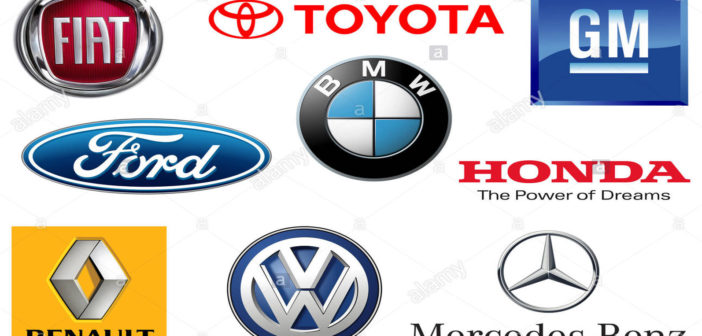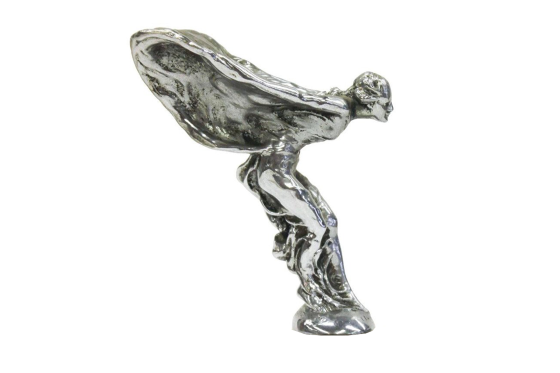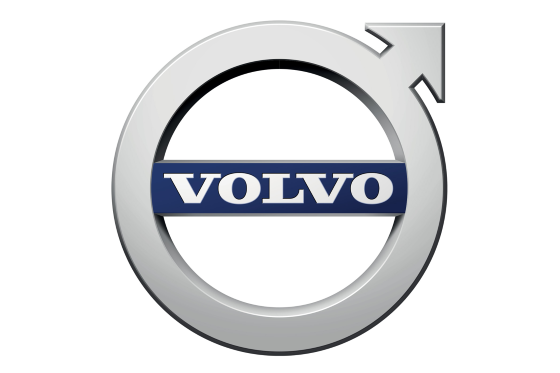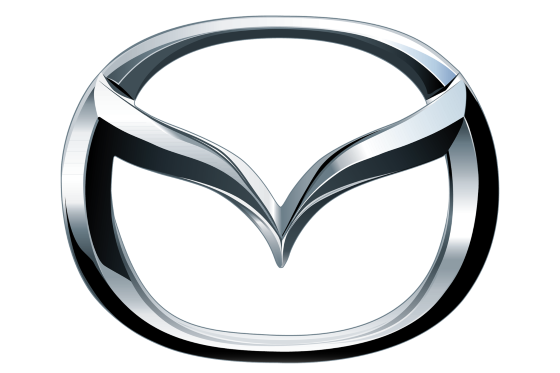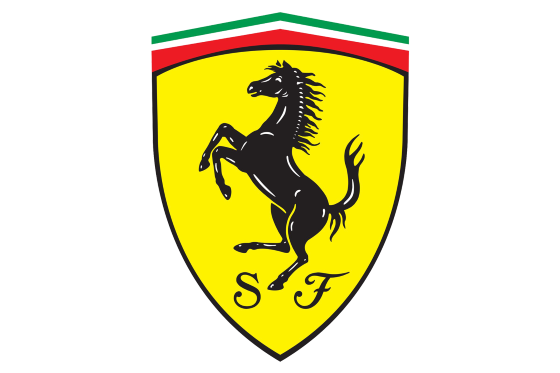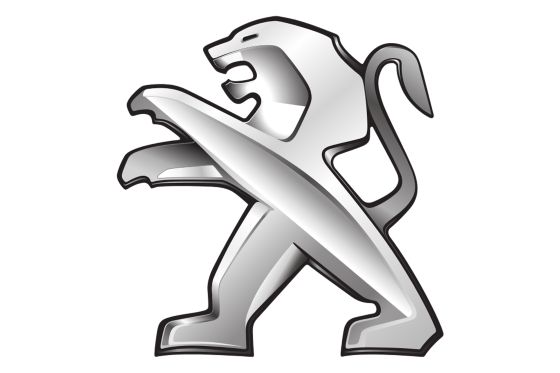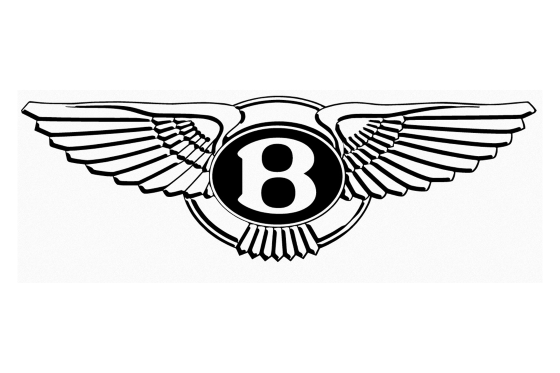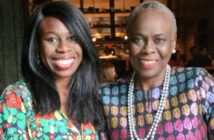We all have preference for one brand of car or another. Our likeness could be as a result of the engine functionality, interior design or esthetic outlook. All the automobile brands in the world has a logo but did you know what that logo on your favourite means? Carmakers’ emblems are synonymous with their companies and their cars, and can be recognize in an instant.
Most of us are fascinated with these emblems but the symbolism they represent are lost to us.
Here is the origins and meanings of some of the carmakers’ emblems:
The inner ovals symbolize the heart of the customer and the heart of the company, overlapping to represent a mutually beneficial relationship and trust, as well as forming a ‘T’ shape for Toyota. The outer oval is for the world embracing Toyota. Each oval is drawn with different stroke thicknesses, pointing to Japanese calligraphy art and culture. The space in the background within the logo is meant to exhibit the values that Toyota stands for: quality, value, driving joy, innovation, and integrity in safety, the environment and social responsibility.
The Mercedes part of the name comes from the daughter of Daimler partner Emil Jellinek. Benz came from Karl Benz, maker of the first real car. When the two companies merged in 1926, Mercedes-Benz was born. The logo originated from a postcard sent in the 1870s by Gottlieb Daimler to his wife, in which he marked where he was living with a three-pointed star and wrote by it: “One day this star will shine over our triumphant factories.” It was first used on a car in 1910 and it came to be that the star’s three spokes represented land, sea and air.
The blue oval, which was first used in 1927, contains the signature of the company’s founder, Henry Ford, which has remained almost unchanged since its first use in 1909.
Rolls-Royces originally just had the overlapping Rs badge. Many owners wanted something more prominent, however, and one, Lord Montagu of Beaulieu, commissioned his friend, the sculptor Charles Robinson Sykes, to design such an ornament. Montagu chose his secretary and mistress, Eleanor Thornton, as the model. The ‘Spirit of Ecstasy’ features her with a finger to her lips and her robes fluttering behind.
The Nissan name is an abbreviation of Nihon Sangyo (Japan Industries), which was the parent company of Datsun. When Nissan replaced Datsun on the back of cars, its logo was the company’s name in a blue rectangle across a red circle. This was to invoke the Japanese flag, which features the Rising Sun. This was turned chrome in the 1990s to represent modernity.
This has two official interpretations, both concerning the upward-facing triangle. The first is that it is a highway, facing towards the future – appropriate, given that the brand was codenamed ‘Horizon’ while under development. The second is that it depicts Mount Fuji, representing the brand’s nationality and the highest point of quality.
The name Volvo is taken from the Latin for ‘I roll’. The logo of a circle with an arrow pointing diagonally up and to the right comes from a Roman symbol for Mars, the god of warfare. Because of this, the symbol came to also stand for iron, as weapons at the time were made from the metal. Volvo’s founders had been in the iron industry, and iron had qualities such as strength, safety and durability, which they wanted, reflected in their cars.
The name is an initialization for the German meaning Bavarian Motor Works. The black exterior circle comes from the logo of BMW’s predecessor, Rapp, while the blue and white chequered roundel represents the flag of Bavaria.
Mitsubishi is unusual in that its name describes its logo, rather than the other way around. ‘Mitsu’ means three, while ‘Hishi’ means water caltrop, which is often used to refer to a rhombus or diamond. Japanese often bend the “h” sound to a “b” when it occurs in the middle of a word. The three-diamond mark was chosen by founder Yataro Iwasaki. It invokes both the three-leaf crest of the Tosa Clan, his first employer, and the three stacked rhombuses of the Iwasaki family crest.
Founder August Horch left his eponymous company but was blocked from using the name again for his own efforts. His son suggested ‘Audi’: ‘Horch’ is German for ‘listen’ and ‘audi’ the same in Latin. The logo derives from that of Auto Union, a merger of four brands (Audi, DKW, Horch and Wanderer). The rings, representing each brand, overlap to signify union. They are silver, the national racing colour of Germany.
The name Mazda is taken from Ahura Mazda, the creator of and god in Zoroastrianism, a religion that was prominent in early Asian cultures. ‘Mazda’ translates as ‘wisdom’. Coincidentally, it is also an Anglicization of the name of the company’s founder, Jujiro Matsuda. Mazda has gone through several badges in its time, with the current one being introduced in 1996. A stylized M within an oval, the oval represents the sun and the M the company. It also looks like outstretched wings, which is claimed to symbolize the Mazda’s freedom of expression.
Although it looks simply like an italicized Honda emblem, the Hyundai logo has a hidden meaning. It is also meant as a stylized handshake of trust between two people, indicating company and consumer, with the company leaning in.
Porsche’s insignia is intrinsically linked to the brand’s home town, which is written in the centre. Below it is a horse – ‘Stuttgart’ translates from Old High German as ‘Stud Garden’. The quartered crest surrounding the horse is taken from the coat of arms of the Free People’s State of Württemberg, which was founded after the dissolution of the German monarchy in 1918, and of which Stuttgart was the capital. The trio of black antlers in the top left and bottom right date back to at least the 10th century, signifying the greater region of Swabia, while the red and black stripes are of the Duke of Württemberg.
At the top of the logo is the Italian flag. Below it is a yellow shield, the colour of Modena. There are also the initials ‘SF’, for Scuderia Ferrari (meaning Team Ferrari), and the leftward-facing prancing black horse. Enzo Ferrari chose this after meeting a count whose late son, Francesco Baracca, had been a fighter ace in the First World War. The horse had been painted on the fuselage of his aeroplane. Baracca’s mother told Ferrari to use the horse on his cars for good luck. The ace was thought to have taken the horse from the plane of a German pilot, whom he had shot down, from Stuttgart. Therefore, the Ferrari horse is the same as the one on the Porsche crest.
Peugeot’s logo features a stylized lion standing on its hind legs. This logo appeared as early as 1847, long before Peugeot entered the automotive business, and represented quality goods. From 1923, Peugeot cars gained a lion’s head bonnet ornament. In 1948, with the introduction of the 203, a more familiar lion appeared – that of the coat of arms of the French region of Franche-Comté, the successor to that in which Armand Peugeot was born. This slowly evolved to become ever more angular.
Alfa is an acronym for Anonima Lombarda Fabbrica Automobili, while Romeo is the surname of the businessman who bought the company in 1915. Of the badge, the red cross on the left is the symbol of Milan, while on the right is a crowned viper swallowing a Moorish man – the insignia of the House of Visconti, which historically ruled the city.
Bentley started building aircraft engines in the First World War, so wings seemed natural. The silver of the logo represents sophistication. There are actually an uneven number of feathers on either side of the wing, and they have varied throughout history.

